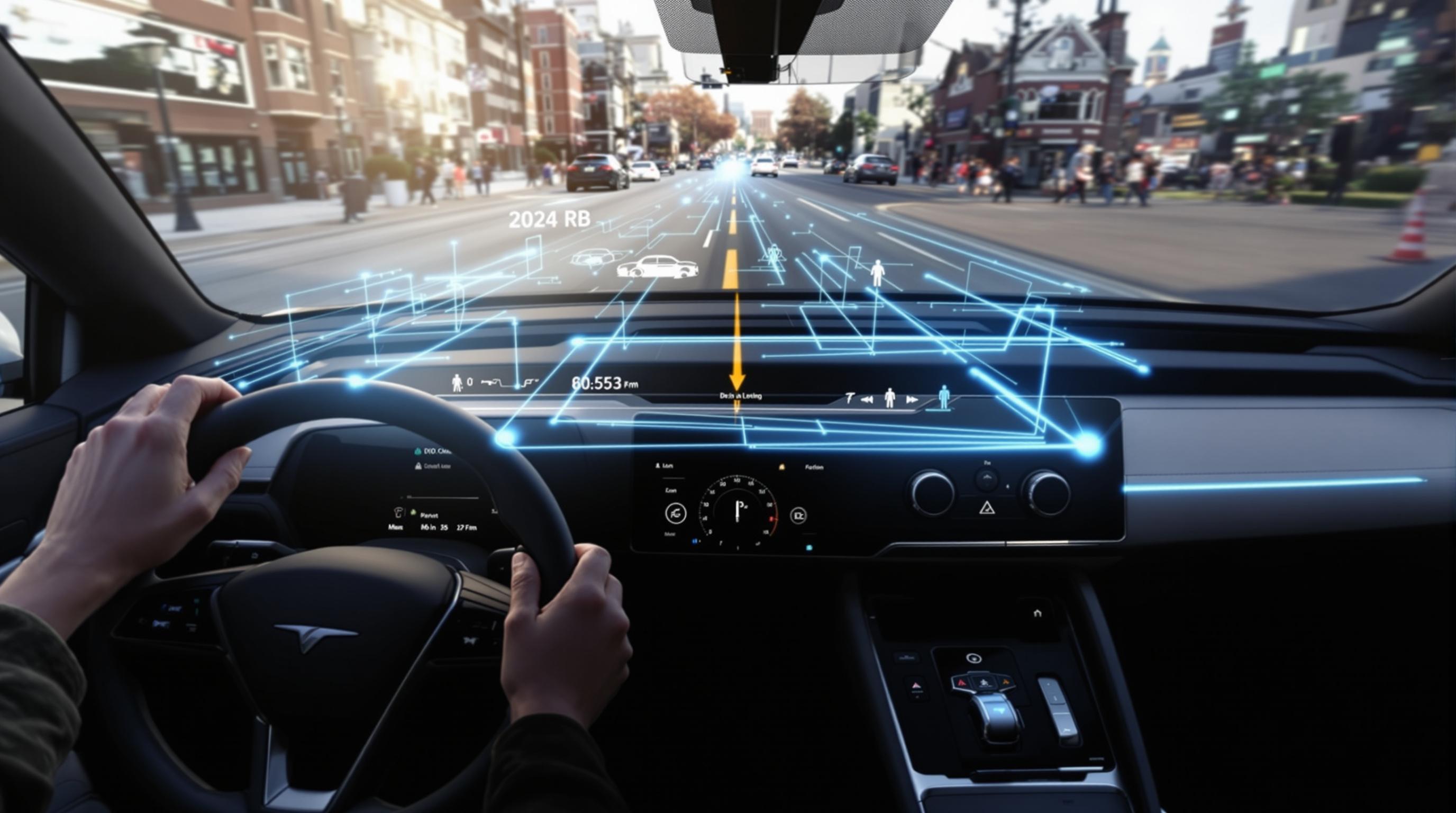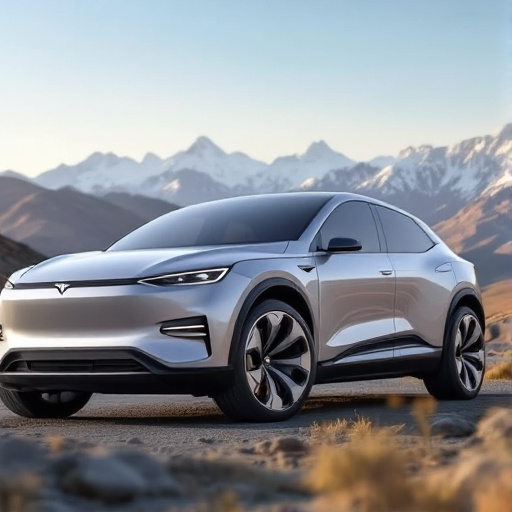Related Articles
- Charged Up! How Electric Vehicles are Reshaping Urban Wildlife Habitats and Biodiversity
- Navigating the Used Car Market: Uncovering the Secrets of 'As-Is' Sales for Savvy Buyers
- The Rise of Electric Car Pop-up Shops: A New Frontier for Urban Retail Experiences
- The Forgotten Art of DIY Car Maintenance: Rediscovering Skills in a Tech-Driven World
- Electric vs. Vintage: The Battle for Enthusiasts' Hearts in the Age of Latest Car Models
- The Rise of the 'Car Review Influencer': How Social Media is Shaping Auto Buying Decisions
12 Innovative Tech Features in 2024 Cars Changing How We Experience Driving Beyond the Dashboard
12 Innovative Tech Features in 2024 Cars Changing How We Experience Driving Beyond the Dashboard
12 Innovative Tech Features in 2024 Cars Changing How We Experience Driving Beyond the Dashboard
1. Augmented Reality Windshields
The 2024 automotive industry is embracing augmented reality (AR) windshields, which project dynamically updated information directly onto the glass. This technology goes beyond traditional heads-up displays by integrating navigation cues, hazard alerts, and real-time environment data in an intuitive manner.
By overlaying essential data onto the driver’s natural view of the road, AR windshields reduce distractions and enhance situational awareness. This innovation aids in safer driving by highlighting pedestrians, road signs, and other critical information without requiring the driver to divert their gaze.
Manufacturers like BMW and WayRay have been advancing this technology, with studies indicating that AR windshields can improve reaction times by up to 20%. According to a report by TechCrunch, this feature represents a leap in how drivers interact with their environment beyond typical dashboard interfaces.
Source: TechCrunch, "Automotive AR windshields in 2024," 2024.
2. AI-Based Driver Assistance Systems
Artificial intelligence (AI) is revolutionizing driver assistance systems in 2024 cars. These systems analyze a wide array of sensor data to anticipate and respond to potential hazards more efficiently. Unlike earlier models, today’s AI assistance adapts to individual driving behaviors and road conditions.
Features such as predictive braking, adaptive cruise control, and lane centering have become smarter and more reliable. AI algorithms continuously learn from driving patterns and environmental data, offering a personalized safety net that evolves with the driver.
According to a 2024 report by McKinsey, vehicles equipped with AI-driven assistance systems show a 30% reduction in accident rates, emphasizing the transformative impact on road safety and driving experience.
Source: McKinsey & Company, "The Rise of AI in Automotive Safety," April 2024.
3. Biometric Vehicle Access
Biometric technology is replacing traditional keys and key fobs, offering enhanced security and personalized settings. Fingerprint scanners, facial recognition, and even voice authentication allow drivers to unlock and start vehicles with ease and safety.
Beyond security, biometric access customizes the vehicle environment automatically. Settings such as seat position, climate control, and infotainment preferences adjust based on the identified driver, making each drive tailored and comfortable.
Leading brands such as Hyundai and Mercedes-Benz have integrated these features in select 2024 models, ensuring both convenience and protection against unauthorized access, as highlighted in an industry overview by Wired magazine.
Source: Wired, "Biometric Car Access in 2024," March 2024.
4. Vehicle-to-Everything (V2X) Communication
V2X technology enables cars to communicate with other vehicles, traffic signals, and infrastructure, creating a connected driving ecosystem. This real-time data exchange improves traffic flow, reduces accidents, and enhances navigation accuracy.
In 2024, V2X has evolved to support smarter cities and autonomous vehicles by relaying information about road conditions, construction zones, and emergency vehicles instantly. This connected framework allows drivers to anticipate and respond to road changes effectively.
According to the U.S. Department of Transportation, the deployment of V2X technology could prevent up to 80% of accidents caused by human error, marking a significant advancement in automotive safety networks.
Source: U.S. DOT, "Impact of V2X on Road Safety," 2024.
5. Advanced Voice Interaction Systems
Voice controls in 2024 cars have transcended simple commands. The new systems incorporate natural language processing and contextual understanding to facilitate complex interactions. Drivers can control navigation, entertainment, climate, and even car diagnostics through conversational dialogue.
This improved voice interface minimizes manual operations, keeping drivers’ focus on the road. Integration with personal virtual assistants and cloud-based services enhances convenience and responsiveness regardless of environment noise or accents.
As reported by CNET, the latest voice systems reduce driver distraction by 35%, proving that smart voice tech significantly changes how drivers engage with their vehicles beyond the dashboard.
Source: CNET, "Voice Tech in 2024 Cars," June 2024.
6. Over-the-Air (OTA) Software Updates
Vehicle software is increasingly updatable via OTA downloads, allowing cars to receive new features, bug fixes, and improvements without dealership visits. This capability transforms the car ownership experience by keeping vehicles up-to-date with the latest advancements.
In 2024, manufacturers like Tesla, Ford, and Volkswagen have expanded OTA services to safety features, performance tuning, and infotainment systems, ensuring longevity and adaptability of the car’s technology over time.
Research by Deloitte emphasizes that OTA updates can reduce maintenance costs by 25% and boost customer satisfaction by enabling continuous innovation beyond the showroom.
Source: Deloitte, "OTA Updates Shaping Future Mobility," 2024.
7. Personalized In-Car Wellness Features
Cars in 2024 integrate wellness technologies to improve driver health and comfort. Sensors monitor vital signs such as heart rate and stress levels, adjusting cabin ambiance through lighting, temperature, and scent accordingly to promote relaxation or alertness.
Some vehicles even offer guided breathing exercises, posture correction through adjustable seats, and real-time alerts when fatigue or distraction is detected. These features represent a holistic approach to driving, focusing on physical and mental well-being.
According to a study published by the Journal of Automotive Medicine, such wellness systems can decrease driver fatigue-related incidents by 15%, indicating a new frontier for health-focused vehicle design.
Source: Journal of Automotive Medicine, "In-Car Wellness Tech in 2024," May 2024.
8. 3D Audio and Immersive Sound Environments
Advanced audio systems in 2024 vehicles employ 3D spatial sound to create immersive listening experiences tailored to individual preferences. These systems enhance entertainment and navigation cues by accurately positioning sounds within the cabin space.
Utilizing multiple speaker arrays and AI-driven sound processing, the cars can simulate concert hall acoustics or isolate audio zones to reduce passenger disturbance. Additionally, 3D audio helps improve safety by localizing alerts like emergency vehicle sirens or pedestrian warnings.
Industry leader Bose introduced new 3D sound technologies in collaboration with automakers, increasing driver focus and entertainment enjoyment, as detailed in Audio Engineering Society publications.
Source: Audio Engineering Society, "3D Audio in Vehicles, 2024," 2024.
9. Flexible and Adaptive Interior Layouts
As mobility needs change, 2024 cars offer flexible interior designs with modular seats and configurable spaces. These customizable cabins support activities such as work, relaxation, or social interaction, responding to evolving driver and passenger preferences.
Features include swivel seats, fold-flat configurations, and integrated screens for remote collaboration or entertainment. This transformation turns cars into versatile living spaces that go beyond traditional transportation purposes.
A report by Automotive News highlights how adaptive interiors are expected to grow in popularity alongside autonomous driving technologies, fostering new user experiences inside the car.
Source: Automotive News, "Adaptive Interiors for the Modern Driver," 2024.
10. Sustainable and Smart Energy Management Systems
Modern 2024 vehicles incorporate intelligent energy management solutions to optimize fuel consumption and electric power usage. These systems dynamically adjust power distribution, regenerative braking, and climate systems to enhance efficiency and reduce emissions.
Smart charging infrastructure integration ensures optimal battery health and charging schedules, reducing the environmental footprint and costs for electric vehicle owners. Real-time dashboard feedback encourages eco-friendly driving habits through gamified experiences and tips.
The International Energy Agency reports that intelligent energy management in vehicles could cut urban transport emissions by up to 25% by enhancing resource utilization and promoting sustainability.
Source: International Energy Agency, "Sustainable Driving Tech 2024," 2024.




